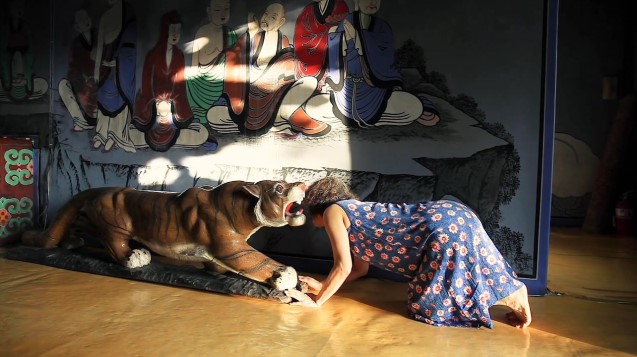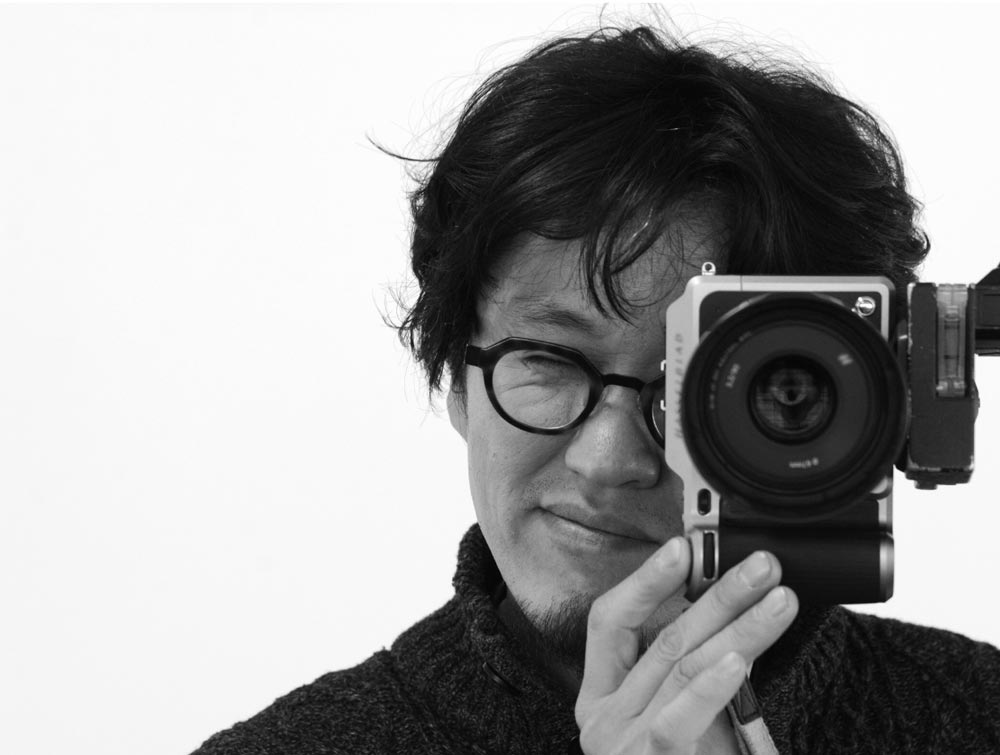In the 21st century, South
Korea has solidified its position as a global cultural powerhouse. K-pop
dominates the global music industry, and K-dramas and K-literature have
seamlessly entered people's daily lives worldwide, bridging popular culture and
fine arts. However, Korean contemporary
art has yet to establish a strong platform on the international stage. Why are
we still confined to outdated frameworks?
Why has Korean contemporary
art failed to achieve global recognition comparable to K-pop?
The answer to this question
is clear. It's because we lack systematic preparation and strategy.
 Ron Mueck, A Girl, 2006,
Acrylic on polyester resin and fiberglass, 110.5 x 134.5 x 501cm ©Thaddaeus Ropac
Ron Mueck, A Girl, 2006,
Acrylic on polyester resin and fiberglass, 110.5 x 134.5 x 501cm ©Thaddaeus RopacThe inaugural exhibition of the National Museum of Modern and Contemporary Art Seoul in 2025 will be an international artist Ron Mueck. Ron Mueck is a great artist, but his exhibition is only imported content.
The Essential Responsibilities
and Roles of the MMCA
As Korea's leading public art
museum, the MMCA should be a key platform for the future of Korean art.
Just as the Tate Modern (UK)
and the Whitney Museum of American Art (US) strategically discover and promote
their own artists to the international stage, the most important part of the
MMCA's raison d'être is to grow Korean contemporary artists internationally.
 Exhibition view of
"Young Korean Artists 2023: Annotating the Museum," MMCA Gwacheon.
(April 27, 2023 - September 10, 2023). Image courtesy of MMCA, Photo: Kim
Joo-young.
Exhibition view of
"Young Korean Artists 2023: Annotating the Museum," MMCA Gwacheon.
(April 27, 2023 - September 10, 2023). Image courtesy of MMCA, Photo: Kim
Joo-young.In an era of global cultural
competition, Korean contemporary art can no longer remain within the confines
of its own country. "Young Korean Artists" should be the starting
point for such a change.
MMCA, Seoul: The Practical Effects of a Global Hub
Seoul is the capital of South
Korea and the center of the country's cultural scene. It functions as a global
hub for art officials and collectors from around the world. Holding "Young
Korean Artists" here will open up more international opportunities for
young artists, and the optimized facilities and resources of the Seoul Pavilion
will help to raise the level and scale of the exhibition.

MMCA, Seoul ©Park Jung Hoon, MMCA
Seoul is also a highly
accessible city, making it easy for domestic and international visitors to
visit.
This will maximize the
opportunities for young artists' works to connect with the public. The "Young
Korean Artists" exhibition at the Seoul Museum is not just a change of
venue, but an important strategic turning point for Korean contemporary art to
communicate with the world and make a leap forward.
Successful Strategies for K-pop are also Necessary for the Art World.
K-pop has dominated the global music market through a thorough system and strategy. It was a combination of talent discovery, systematic training, global market analysis, and strategic marketing. Now, Korean contemporary art needs the same preparation and system.
 Exhibition view of
"Young Korean Artists 2023: Annotating the Museum", Kim Dongsin,
'Relief,' 'Map,' 'Human Scale,' 'Ring,' 2023. Image courtesy of MMCA, Photo:
Kim Joo-young.
Exhibition view of
"Young Korean Artists 2023: Annotating the Museum", Kim Dongsin,
'Relief,' 'Map,' 'Human Scale,' 'Ring,' 2023. Image courtesy of MMCA, Photo:
Kim Joo-young."Young Korean
Artists" exhibition could be the first step in establishing a “K-pop
system” in the art world. The MMCA should organize this exhibition in Seoul,
showcase the work of young artists on an international level, and create a
strategic support system that leads to biennial and global museums.
Major countries around the
world are already strategically introducing their artists to the world. France,
the United Kingdom, and the United States have public institutions that take
the lead in discovering, nurturing, and promoting artists to the international
stage. Korea, however, still relies on the efforts of private galleries and
individual artists. It is time for the National Museum of Contemporary Art to
fulfill its responsibilities as a public institution and change the tide.
Conclusion: "Young Korean Artists" Exhibition is a Strategic Choice for the Future of Korean art.
"Young Korean
Artists" exhibition is an important step toward the future of contemporary
Korean art. The exhibition's move to Seoul is not just a change of venue, but a
strategic decision that shifts the paradigm of the Korean art world.
The exhibition
will provide young artists with more opportunities and international attention
and will open a new chapter for Korean art to communicate with the world.

MMCA, Gwacheon ©ggc, MMCA
It's time for the National Museum of Modern and Contemporary Art to step up. Sanction that the 'Young Korean Artists' exhibition is held in MMCA, Seoul. This will open up a new future for Korean art and be the first step toward Korea becoming a truly culturally advanced country.
Jay Jongho Kim graduated from the Department of Art Theory at Hongik University and earned his master's degree in Art Planning from the same university. From 1996 to 2006, he worked as a curator at Gallery Seomi, planning director at CAIS Gallery, head of the curatorial research team at Art Center Nabi, director at Gallery Hyundai, and curator at Gana New York. From 2008 to 2017, he served as the executive director of Doosan Gallery Seoul & New York and Doosan Residency New York, introducing Korean contemporary artists to the local scene in New York. After returning to Korea in 2017, he worked as an art consultant, conducting art education, collection consulting, and various art projects. In 2021, he founded A Project Company and is currently running the platforms K-ARTNOW.COM and K-ARTIST.COM, which aim to promote Korean contemporary art on the global stage.





















